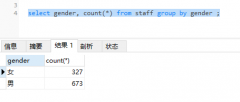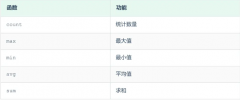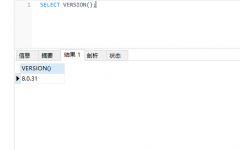Regex pattern inside SQL Replace function?(SQL Replace 函数中的正则表达式模式?)
问题描述
SELECT REPLACE('<strong>100</strong><b>.00 GB', '%^(^-?d*.{0,1}d+$)%', '');
I want to replace any markup between two parts of the number with above regex, but it does not seem to work. I'm not sure if it is regex syntax that's wrong because I tried simpler one such as '%[^0-9]%' just to test but it didn't work either. Does anyone know how can I achieve this?
You can use PATINDEX to find the first index of the pattern (string's) occurrence. Then use STUFF to stuff another string into the pattern(string) matched.
Loop through each row. Replace each illegal characters with what you want. In your case replace non numeric with blank. The inner loop is if you have more than one illegal character in a current cell that of the loop.
DECLARE @counter int
SET @counter = 0
WHILE(@counter < (SELECT MAX(ID_COLUMN) FROM Table))
BEGIN
WHILE 1 = 1
BEGIN
DECLARE @RetVal varchar(50)
SET @RetVal = (SELECT Column = STUFF(Column, PATINDEX('%[^0-9.]%', Column),1, '')
FROM Table
WHERE ID_COLUMN = @counter)
IF(@RetVal IS NOT NULL)
UPDATE Table SET
Column = @RetVal
WHERE ID_COLUMN = @counter
ELSE
break
END
SET @counter = @counter + 1
END
Caution: This is slow though! Having a varchar column may impact. So using LTRIM RTRIM may help a bit. Regardless, it is slow.
Credit goes to this StackOverFlow answer.
EDIT Credit also goes to @srutzky
Edit (by @Tmdean) Instead of doing one row at a time, this answer can be adapted to a more set-based solution. It still iterates the max of the number of non-numeric characters in a single row, so it's not ideal, but I think it should be acceptable in most situations.
WHILE 1 = 1 BEGIN
WITH q AS
(SELECT ID_Column, PATINDEX('%[^0-9.]%', Column) AS n
FROM Table)
UPDATE Table
SET Column = STUFF(Column, q.n, 1, '')
FROM q
WHERE Table.ID_Column = q.ID_Column AND q.n != 0;
IF @@ROWCOUNT = 0 BREAK;
END;
You can also improve efficiency quite a lot if you maintain a bit column in the table that indicates whether the field has been scrubbed yet. (NULL represents "Unknown" in my example and should be the column default.)
DECLARE @done bit = 0;
WHILE @done = 0 BEGIN
WITH q AS
(SELECT ID_Column, PATINDEX('%[^0-9.]%', Column) AS n
FROM Table
WHERE COALESCE(Scrubbed_Column, 0) = 0)
UPDATE Table
SET Column = STUFF(Column, q.n, 1, ''),
Scrubbed_Column = 0
FROM q
WHERE Table.ID_Column = q.ID_Column AND q.n != 0;
IF @@ROWCOUNT = 0 SET @done = 1;
-- if Scrubbed_Column is still NULL, then the PATINDEX
-- must have given 0
UPDATE table
SET Scrubbed_Column = CASE
WHEN Scrubbed_Column IS NULL THEN 1
ELSE NULLIF(Scrubbed_Column, 0)
END;
END;
If you don't want to change your schema, this is easy to adapt to store intermediate results in a table valued variable which gets applied to the actual table at the end.
这篇关于SQL Replace 函数中的正则表达式模式?的文章就介绍到这了,希望我们推荐的答案对大家有所帮助,也希望大家多多支持编程学习网!
本文标题为:SQL Replace 函数中的正则表达式模式?


基础教程推荐
- 带更新的 sqlite CTE 2022-01-01
- MySQL根据从其他列分组的值,对两列之间的值进行求和 2022-01-01
- 使用 VBS 和注册表来确定安装了哪个版本和 32 位 2021-01-01
- while 在触发器内循环以遍历 sql 中表的所有列 2022-01-01
- ORA-01830:日期格式图片在转换整个输入字符串之前结束/选择日期查询的总和 2021-01-01
- 如何在 CakePHP 3 中实现 INSERT ON DUPLICATE KEY UPDATE aka upsert? 2021-01-01
- CHECKSUM 和 CHECKSUM_AGG:算法是什么? 2021-01-01
- 从字符串 TSQL 中获取数字 2021-01-01
- MySQL 5.7参照时间戳生成日期列 2022-01-01
- 带有WHERE子句的LAG()函数 2022-01-01

















